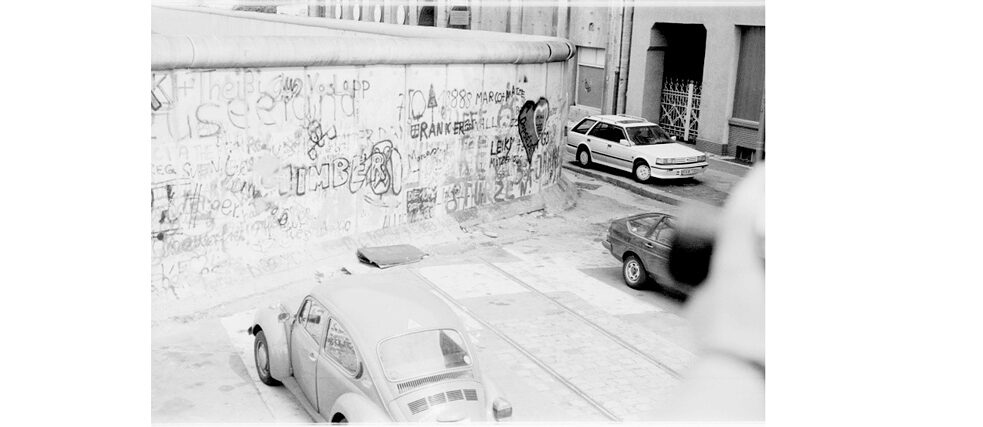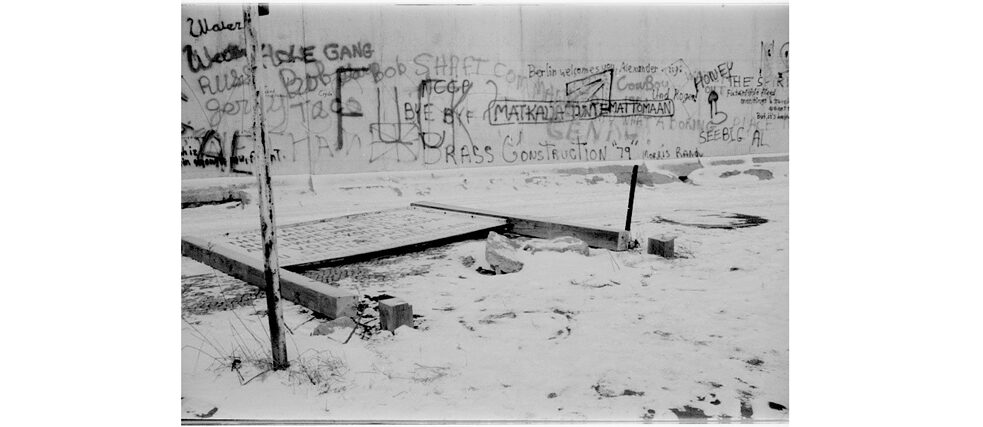Chapter 1
On the traffic signs' Absurdity

A resident parks her car in the middle of a Kreuzberger street and walks to her flat on the last few centimeters of West Berlin. What sort of traffic could hinder her here?
By Regine Hader and Dr. Andreas Ludwig
She passes through the narrow passage between the front of the house and the wall. The VW-Beetle defies the absurdity of the Wall, as if it had suddenly placed itself in the car’s way during the drive. Next to it: streetcar tracks that end up nowhere, like a broken connection into a world behind graffiti and concrete. What this Kreuzberg idyll does not show are the more than 130 people who were shot while fleeing along this border.
The Wall has enclosed West Berlin since 13 August 1961, sometimes separating even from odd house numbers on the right and left sides of the street. The photo shows how it crosses the Berliners’ streets, how close it gets to their windows and how of necessity they live with it.
 The border as a canvas
| Photo: © Andreas Ludwig
In contrast, West Berliners spray-paint the Wall, appropriating the border as a canvas. With their graffiti, they comment ironically on the West Berlin lifestyle - directly on the grey concrete that divides the city.
The border as a canvas
| Photo: © Andreas Ludwig
In contrast, West Berliners spray-paint the Wall, appropriating the border as a canvas. With their graffiti, they comment ironically on the West Berlin lifestyle - directly on the grey concrete that divides the city.
Four-language signboards lie fallen over in the snow along the Wall. They warn about the freedom or the danger of crossing the border. A few steps further it is clear that no crossing is possible here anyway. At this spot in Kreuzberg it says: "You are Leaving the American Sector". On the East Berlin side, a desolate restricted area runs along the Wall, keeping its own population away from the "peace border".
Read on in Chapter 2
Comments
Comment